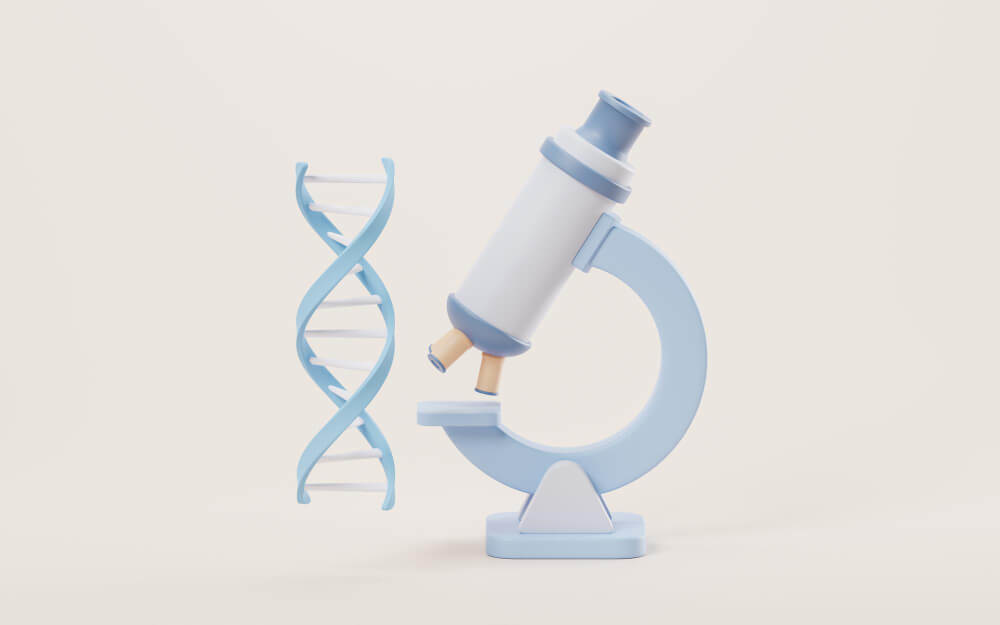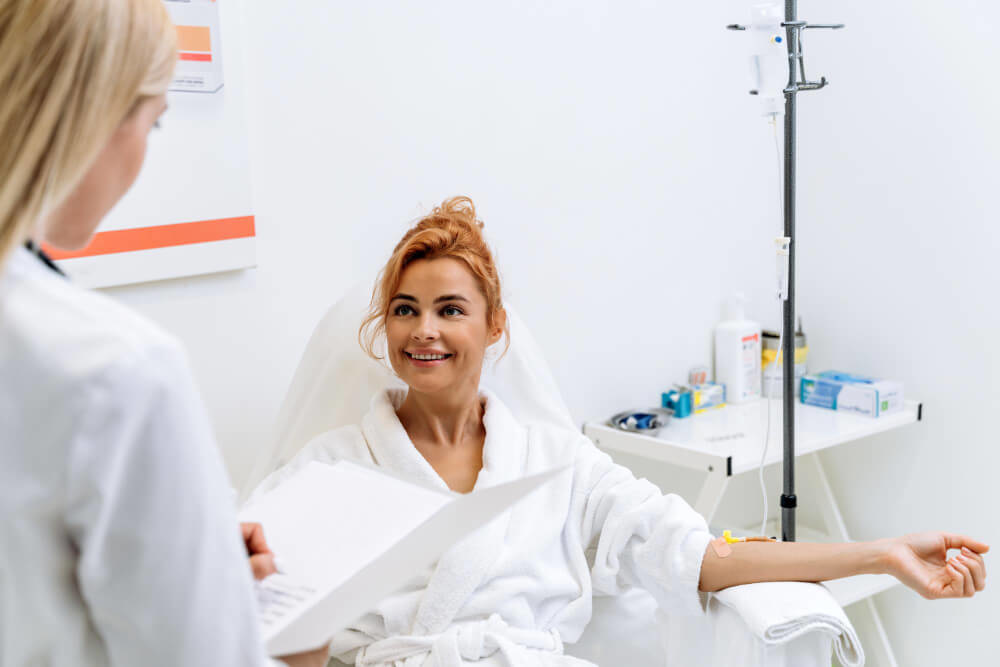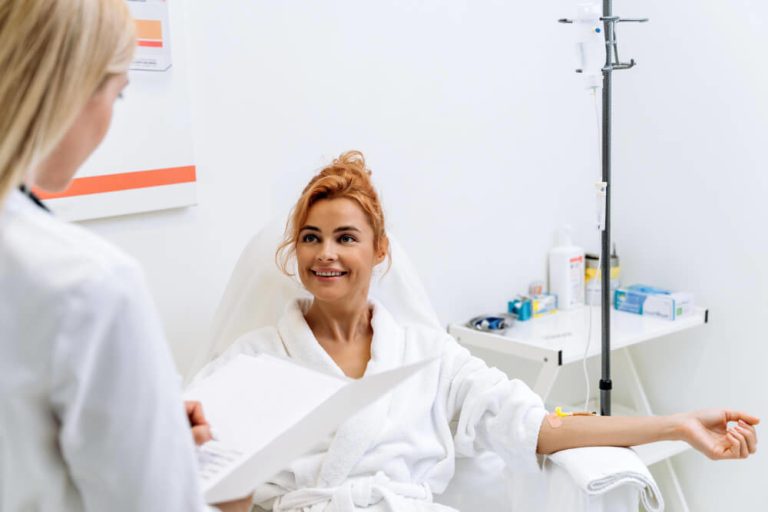Navigating Menopause with Strength: Your Essential Training Guide
Menopause can feel like your body’s rulebook has been completely rewritten without your permission. The sudden hot flashes, unpredictable mood shifts, stubborn weight gain, and sleepless nights are not just minor inconveniences; they are significant life disruptions. This transition, a natural and inevitable phase of life, often leaves women feeling confused, frustrated, and disconnected from their own bodies.
But what if you could see this change not as an ending, but as an invitation to become stronger, more resilient, and more in tune with your body than ever before? This is the core principle behind a proactive approach to this life stage. By embracing targeted strategies, you can reclaim control and navigate this period with confidence and vitality. A dedicated menopause training plan is your roadmap to doing just that.
This guide is designed to demystify the process. We will explore the science behind why your body is changing and provide a comprehensive blueprint for exercise, nutrition, and lifestyle adjustments. This is not about ‘fighting’ menopause. It is about working with your body intelligently to mitigate symptoms, protect your long-term health, and build a foundation of strength for the years to come.

Why Does My Body Change So Much During Menopause?
To effectively manage the transition, it is crucial to first understand the underlying biological shifts. Menopause is defined as the point in time 12 months after a woman’s last menstrual period. The years leading up to it, known as perimenopause, are characterized by significant hormonal fluctuations, primarily a decline in estrogen.
Estrogen is a powerful hormone with receptors all over your body, from your brain to your bones. Its decline triggers a cascade of changes. It is not just about reproductive health; it impacts your metabolism, body composition, bone density, cardiovascular system, and even your cognitive function. This is the ‘why’ behind the symptoms you experience.
One of the most common complaints is weight gain, particularly around the midsection. This is not a failure of willpower. As estrogen levels drop, your body’s metabolism naturally slows down, meaning you burn fewer calories at rest. Furthermore, the hormonal shift encourages fat storage to move from the hips and thighs to the abdomen, resulting in more visceral fat, which is linked to increased health risks.
Simultaneously, the body experiences an accelerated loss of muscle mass, a condition known as sarcopenia. Muscle is metabolically active tissue, so less muscle means a slower metabolism, compounding the issue of weight gain. This loss of muscle also affects your strength, stability, and overall physical capability, making daily activities feel more strenuous.
Your bones are also vulnerable during this time. Estrogen plays a vital role in regulating bone turnover, the process of breaking down old bone and replacing it with new bone. With less estrogen, bone breakdown outpaces bone formation, leading to a rapid decrease in bone mineral density. This significantly increases the risk of osteoporosis and fractures in later life.
Beyond the physical, hormonal changes wreak havoc on mood and sleep. Estrogen influences neurotransmitters in the brain like serotonin and dopamine, which regulate mood. Fluctuations can lead to increased anxiety, irritability, and feelings of depression. This is often exacerbated by poor sleep, another hallmark of menopause, frequently caused by night sweats and hormonal shifts that disrupt natural sleep cycles.
Finally, the protective effects of estrogen on the cardiovascular system diminish. This leads to changes in cholesterol levels and blood pressure, increasing the long-term risk for heart disease. Understanding these interconnected changes is the first step in creating a training plan that addresses not just the symptoms, but the root causes, setting you up for a healthier future.

What Are the Foundations of an Effective Menopause Exercise Plan?
An effective menopause exercise plan is not about punishing workouts or spending hours in the gym. It is about smart, targeted training that directly counteracts the physiological changes your body is undergoing. The foundation rests on three key pillars: strength training, cardiovascular exercise, and flexibility or balance work. Each plays a unique and essential role in building a resilient body and mind.
This multi-faceted approach ensures you are addressing everything from bone density and muscle mass to heart health and mental well-being. It is about creating a holistic routine that supports your body through this transition and beyond. Let’s break down why each of these components is non-negotiable.

How Does Strength Training Help During Menopause?
If there is one form of exercise to prioritize during menopause, it is strength training. Also known as resistance training, this type of exercise involves working your muscles against an opposing force, whether it’s from weights, resistance bands, or your own body weight. Its benefits are perfectly tailored to combat the primary challenges of menopause.
First and foremost, strength training builds muscle. By stimulating muscle fibers to grow, you directly counteract sarcopenia, the age-related loss of muscle mass. More muscle means a higher resting metabolic rate, which helps manage weight and reduce the accumulation of visceral fat. A stronger body also makes everyday tasks easier and reduces the risk of injury.
Secondly, resistance training is one of the most effective ways to protect your bones. The mechanical stress that weight-bearing exercise places on your skeleton signals the body to build more bone tissue. This process helps to slow bone loss and can even increase bone density, significantly reducing your risk for osteoporosis. The goal is to strengthen bones and build muscle to create a robust frame for the future.
Aim for at least two to three strength training sessions per week, focusing on major muscle groups like legs, back, chest, and core. You can use free weights, machines at a gym, or start with bodyweight exercises like squats, push-ups, and planks at home. The key is progressive overload, which means gradually increasing the weight, reps, or difficulty as you get stronger.

Why is Cardiovascular Exercise Still Important?
While strength training is critical, cardiovascular or aerobic exercise remains a vital component of your routine. Cardio is any activity that raises your heart rate and keeps it elevated for a sustained period. Its primary benefit during menopause is protecting your heart.
As estrogen’s protective effects on the cardiovascular system wane, regular cardio helps maintain a healthy heart by improving cholesterol levels, lowering blood pressure, and enhancing circulation. It is also a powerful tool for weight management, as it burns calories and helps reduce overall body fat, including the dangerous visceral fat around your organs.
Beyond physical health, the mental health benefits are profound. Aerobic exercise is a proven mood booster, releasing endorphins that can alleviate feelings of anxiety and depression. It can also improve sleep quality and has been shown to be effective in alleviating common menopause symptoms like the frequency and severity of hot flashes.
Incorporate 150 minutes of moderate-intensity cardio, like brisk walking, cycling, or swimming, into your week. Alternatively, you can do 75 minutes of vigorous-intensity exercise, such as running or high-intensity interval training (HIIT). HIIT, which involves short bursts of intense effort followed by brief recovery periods, can be particularly time-efficient and effective for improving cardiovascular fitness and insulin sensitivity.

Can Flexibility and Balance Training Make a Difference?
Flexibility and balance are the often-overlooked but essential elements of a well-rounded menopause training plan. As we age, muscles and connective tissues can become tighter, leading to stiffness, joint pain, and a reduced range of motion. Activities like yoga, Pilates, and regular stretching help counteract this.
Improved flexibility reduces the risk of injury during other activities and can alleviate common aches and pains, particularly in the back and hips. These practices also promote better posture, which can be compromised by the loss of muscle tone and changes in body composition. Standing taller not only looks more confident but also allows your body to function more efficiently.
Balance training is equally critical. As bone density and muscle strength decline, the risk of falls increases dramatically. Exercises that challenge your stability, such as standing on one leg or practicing tai chi, improve your proprioception, your body’s awareness of its position in space. This directly translates to better balance and a lower risk of falls and fractures.
Furthermore, these mind-body practices are exceptional for stress reduction. The deep breathing and mindful movements inherent in yoga and Pilates can help lower cortisol levels, the body’s primary stress hormone. High cortisol is linked to increased belly fat and can disrupt sleep, so managing it is key to overall well-being during menopause.

How Can I Create a Workout Schedule That Works for Me?
Knowing what to do is one thing; putting it into practice consistently is another. Creating a sustainable workout schedule is about finding a balance that fits your life, energy levels, and personal preferences. The best plan is the one you can stick with long-term.
A balanced weekly schedule might look like this: two or three days of full-body strength training, two or three days of cardiovascular exercise, and one or two days dedicated to active recovery, which can include stretching, a gentle yoga class, or a leisurely walk. It is important to spread these activities throughout the week to give your body time to recover and adapt.
Listen to your body. Menopause can bring fluctuating energy levels and new aches. On days when you feel fatigued, a high-intensity workout might not be the best choice. Instead, opt for a walk or some gentle stretching. The goal is not to push through pain but to move your body in a way that feels supportive and energizing. Honoring your body’s daily needs is a crucial part of making exercise a consistent habit.
Start slowly if you are new to exercise or have been inactive for a while. You might begin with two strength sessions and two 20-minute walks per week, gradually increasing the duration and intensity as you feel stronger. Finding an activity you genuinely enjoy is also a powerful motivator. If you hate running, do not force it. Try dancing, hiking, swimming, or a group fitness class instead. The more you enjoy it, the more likely you are to continue.

What Else Supports a Healthy Menopause Transition?
Exercise is a cornerstone of managing menopause, but it is most effective when integrated into a holistic lifestyle that includes supportive nutrition, stress management, and adequate sleep. These elements work synergistically with your training to optimize your health and well-being. Think of them as essential support systems for your body during this significant change.
What you eat, how you handle stress, and the quality of your rest all have a direct impact on your hormonal balance, energy levels, and the results you see from your workouts. A comprehensive approach addresses the whole person, not just the physical body.

How Does Nutrition Complement Menopause Training?
Nutrition during menopause is not about restrictive dieting. It is about fueling your body with the nutrients it needs to support muscle growth, protect bone health, and manage hormonal symptoms. Prioritizing certain macronutrients and micronutrients can make a world of difference.
Protein is paramount. As you engage in strength training to build muscle, your body needs adequate protein to repair and synthesize new muscle tissue. Aim to include a source of lean protein, like chicken, fish, tofu, beans, or Greek yogurt, with every meal. This will also help with satiety, keeping you feeling full and reducing cravings.
Calcium and vitamin D are the dynamic duo for bone health. With the increased risk of osteoporosis, ensuring you get enough of these nutrients is non-negotiable. Dairy products, leafy greens, and fortified foods are good sources of calcium. Vitamin D, which helps your body absorb calcium, is best obtained from sun exposure and can be supplemented, especially in winter months.
A well-formulated diet provides the foundation, but sometimes targeted support is needed. For those seeking to optimize their nutritional strategy, consulting a professional or reviewing a guide to nutraceuticals and supplements can offer valuable insights into what might be beneficial for your individual needs, under the guidance of a healthcare provider.

Can Managing Stress and Sleep Improve My Results?
Absolutely. Stress and sleep are two sides of the same coin, and both have a profound effect on your menopausal journey. Chronic stress leads to elevated levels of cortisol, a hormone that promotes the storage of belly fat and can interfere with sleep, creating a vicious cycle.
Implementing stress-management techniques is crucial. This could be a daily meditation practice, deep breathing exercises, spending time in nature, or engaging in a hobby you love. These activities help shift your nervous system from a ‘fight or flight’ state to a ‘rest and digest’ state, lowering cortisol and promoting a sense of calm.
Quality sleep is when your body does its most important repair work, including muscle recovery and hormone regulation. To improve sleep, establish a relaxing bedtime routine, keep your bedroom cool and dark, and avoid screens before bed. Addressing night sweats through a cool room or moisture-wicking pajamas can also help. Protecting your sleep is essential for cognitive function, as a lack of rest can exacerbate the brain fog that many women experience, highlighting the impact of menopause on long-term brain health.

What Role Does Hormone Replacement Therapy Play?
For some women, lifestyle interventions alone may not be enough to manage severe symptoms. Hormone Replacement Therapy (HRT) can be a highly effective option for alleviating debilitating symptoms like intense hot flashes, severe mood swings, and vaginal dryness, making it easier to maintain a consistent exercise routine and a good quality of life.
HRT works by replacing the estrogen that your body is no longer producing, thereby addressing the root cause of many menopausal symptoms. It is a medical treatment that should be discussed thoroughly with a healthcare provider who can assess your personal health history and help you weigh the benefits and risks.
There are various ways to administer hormones, and the best method depends on individual needs and preferences. Understanding the differences between different hormone delivery systems, such as patches, gels, or pills, is an important part of the conversation with your doctor. HRT can be a powerful tool within a comprehensive menopause management plan, helping to bridge the gap when symptoms are overwhelming.

What If I’m Feeling Unmotivated or Dealing with Pain?
It is completely normal to face hurdles on your fitness journey, especially during menopause when fatigue, joint pain, and low motivation can feel like major roadblocks. The key is to approach these challenges with compassion and smart strategies, rather than giving up entirely.
If you are feeling unmotivated, start small. The idea of a one-hour workout can be daunting, but a 10-minute walk or a few simple stretches is achievable. Often, just starting is the hardest part, and you may find you have the energy to do more once you get going. Celebrate these small wins.
For joint pain, focus on low-impact activities like swimming, cycling, or using an elliptical machine. These get your heart rate up without stressing your joints. Proper warm-ups and cool-downs are also essential to prepare your body for movement and aid in recovery. A targeted approach to exercise to boost your mood and bone health can make a significant difference in how you feel both physically and mentally.
Finding a source of support can also be a game-changer. This could be a workout buddy, a group fitness class, or a qualified trainer who understands the nuances of menopause. Sharing the experience with others can provide accountability and a sense of community, making the journey feel less isolating and more enjoyable.
Menopause is not a destination of decline but a period of profound transformation. By embracing a strategic training plan that encompasses strength, cardio, and flexibility, and supporting it with smart nutrition and lifestyle choices, you are not just managing symptoms. You are actively building a more powerful, resilient, and vibrant version of yourself for the decades ahead. This is your opportunity to take control and redefine what it means to age with strength and grace.
Frequently Asked Questions

Can I use vaginal estrogen if I have a history of breast cancer?
The use of vaginal estrogen in breast cancer survivors is a decision that requires careful discussion with your oncologist and gynecologist. While systemic hormone therapy is generally avoided, guidelines recognize that the extremely low dose of hormone in local vaginal estrogen results in minimal absorption into the bloodstream. For many survivors, particularly those with severe genitourinary symptoms of menopause (GSM) that don’t respond to non-hormonal treatments, the significant improvement in quality of life may outweigh the theoretical, very low risk.
Ultimately, this is a highly individualized decision based on your specific cancer type, treatment history, and symptom severity. The conversation with your healthcare team will involve weighing the benefits of relieving painful symptoms against any potential risks. For many, after a thorough evaluation, low-dose vaginal estrogen is considered a reasonably safe option to manage debilitating GSM and restore vaginal health.

How is local vaginal estrogen different from systemic hormone replacement therapy (HRT)?
Local vaginal estrogen is designed to work directly on the tissues of the vagina and lower urinary tract with very little absorption into the rest of the body. Its primary purpose is to reverse the thinning and drying of these specific tissues, known as vulvovaginal atrophy, to alleviate symptoms like dryness, pain with sex, and urinary issues. After an initial period, the amount of estrogen that enters the bloodstream is negligible and typically does not raise hormone levels above the normal postmenopausal range.
Systemic HRT, delivered via pills, patches, or gels, is intended to raise estrogen levels throughout the entire body. This approach is used to treat widespread menopausal symptoms like hot flashes, night sweats, and to prevent osteoporosis. Because systemic HRT affects the whole body and results in much higher blood levels of estrogen, it carries different risks and benefits compared to the targeted, local action of vaginal estrogen.

What happens if I stop using vaginal estrogen?
The benefits of vaginal estrogen are directly tied to its continued use, as it treats the symptoms of estrogen deficiency but does not cure the underlying condition. If you stop treatment, the vaginal and urinary tissues will gradually revert to their pre-treatment, atrophic state over a period of weeks to months. Consequently, symptoms such as vaginal dryness, irritation, pain during intercourse, and urinary urgency are very likely to return.
Because menopause is a permanent state, vaginal estrogen is generally considered a long-term therapy for managing genitourinary symptoms effectively. There is no medical reason to stop treatment after a certain number of years if it remains effective and you are not experiencing side effects. If you decide to discontinue use, it is a reversible choice, and you can restart the therapy later in consultation with your doctor if symptoms reappear.
Discover the most comprehensive functional medicine training, longevity training, and biohacking certification programs designed specifically for healthcare professionals, medics, and clinic owners who want to master regenerative medicine protocols and anti-aging therapies.







